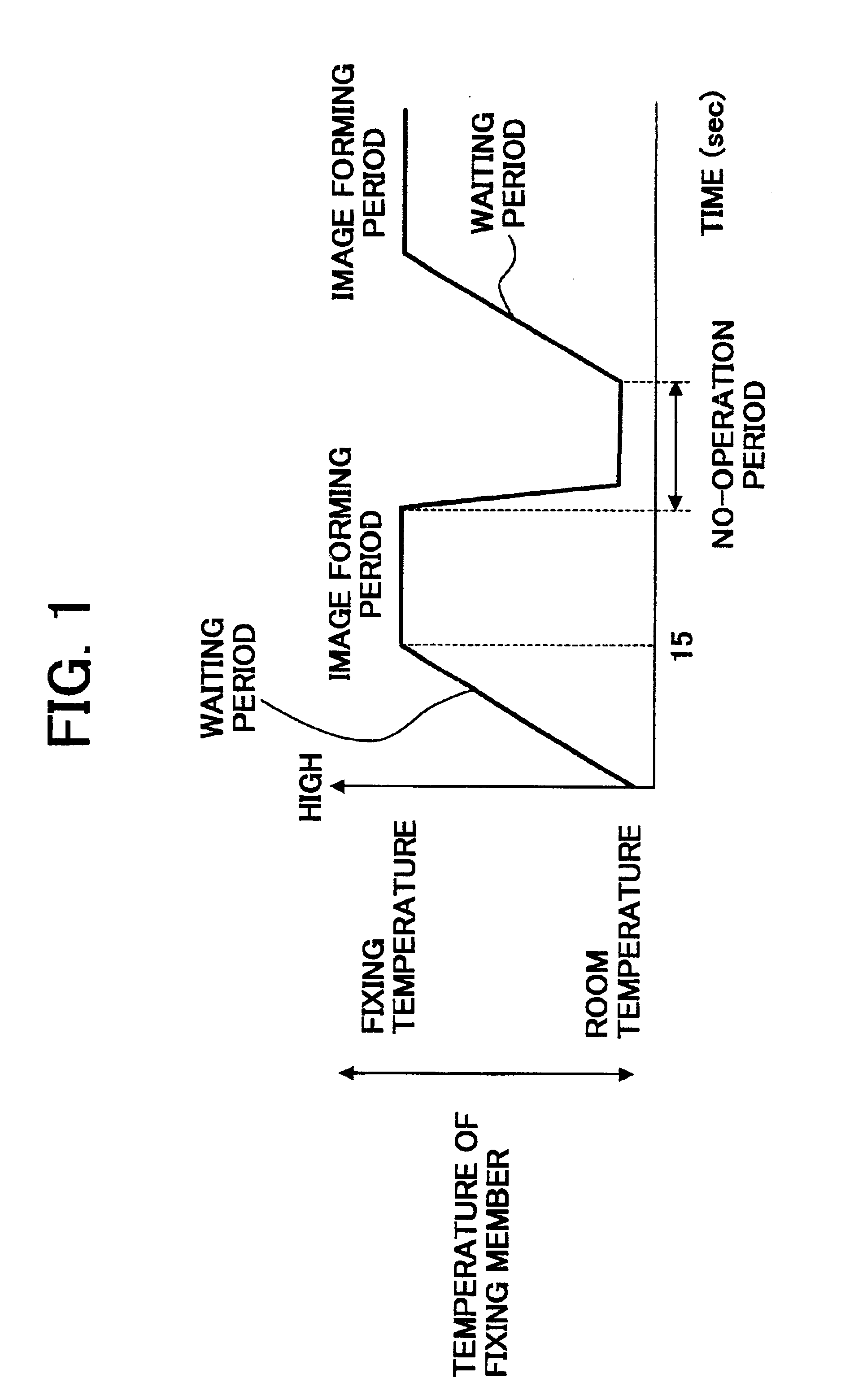Toner, method for manufacturing the toner, and image forming method and apparatus using the toner
a technology of toner and manufacturing method, applied in the field of toner, can solve the problems of stripe image on half tone image, formation of undesired image, and filming problem,
- Summary
- Abstract
- Description
- Claims
- Application Information
AI Technical Summary
Benefits of technology
Problems solved by technology
Method used
Image
Examples
example 1
[0200]The following components were mixed in a Henshel mixer.
[0201]
Non-linear polyester resin (A)60(acid value of 16.3 mgKOH / g, hydroxyl value of 35.1 mgKOH / g,softening point of 145.1° C., and glass transitiontemperature of 61.5° C.)Linear polyester resin (B)40(acid value of 2.1 mgKOH / g, hydroxyl value of 34 mgKOH / g,softening point of 100.8° C., and glass transitiontemperature of 60.3° C.)Carnauba wax4.5(particle diameter of 400 μm)Carbon black8(#44 from Mitsubishi Kasei Corp.)Zn (II) complex of 3,5-di-tert-butylsalicylic acid3
[0202]The mixture was heated to 130° C. and kneaded for about 30 minutes. The kneaded mixture was cooled to room temperature, and then crushed with a hammer mill to prepare particles having a particle diameter of from 200 to 400 μm. The thus prepared particles were pulverized and classified using a pulverization / classification apparatus IDS-2 (manufactured by Nippon Pneumatic Mfg. Co., Ltd.) in which a pulverizer, in which the particles were collided with a pl...
examples 2 , 3 and 4
Examples 2, 3 and 4
[0217]The procedures for preparation and evaluation of the toner and developer in Example 1 were repeated except that the particle diameter distribution of the toner particles was changed as described in Table 1 by changing the amount of the particles supplied to the pulverization / classification apparatus and the pulverizing air pressure.
example 5
[0218]The procedures for preparation and evaluation of the toner and developer in Example 1 were repeated except that the carnauba wax was replaced with a rice wax (particle diameter of 500 μm) when the toner was prepared.
PUM
 Login to View More
Login to View More Abstract
Description
Claims
Application Information
 Login to View More
Login to View More - R&D
- Intellectual Property
- Life Sciences
- Materials
- Tech Scout
- Unparalleled Data Quality
- Higher Quality Content
- 60% Fewer Hallucinations
Browse by: Latest US Patents, China's latest patents, Technical Efficacy Thesaurus, Application Domain, Technology Topic, Popular Technical Reports.
© 2025 PatSnap. All rights reserved.Legal|Privacy policy|Modern Slavery Act Transparency Statement|Sitemap|About US| Contact US: help@patsnap.com



